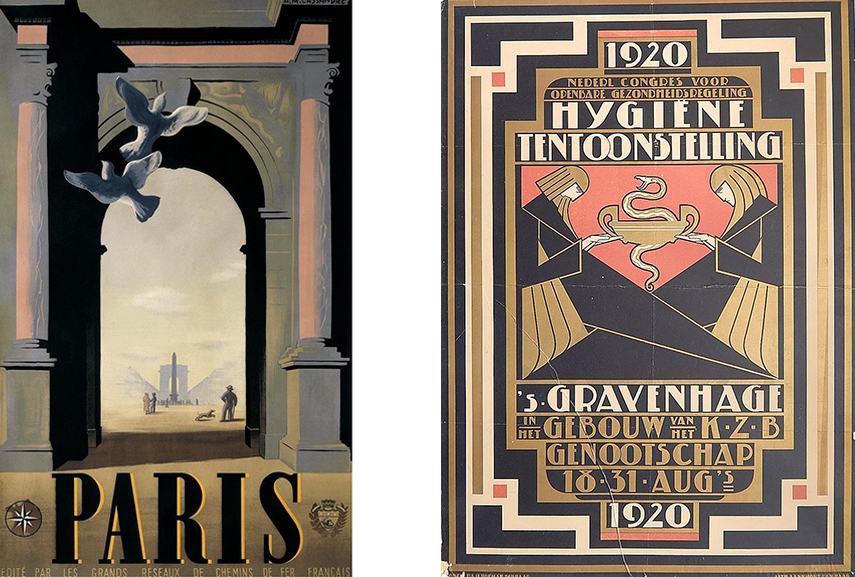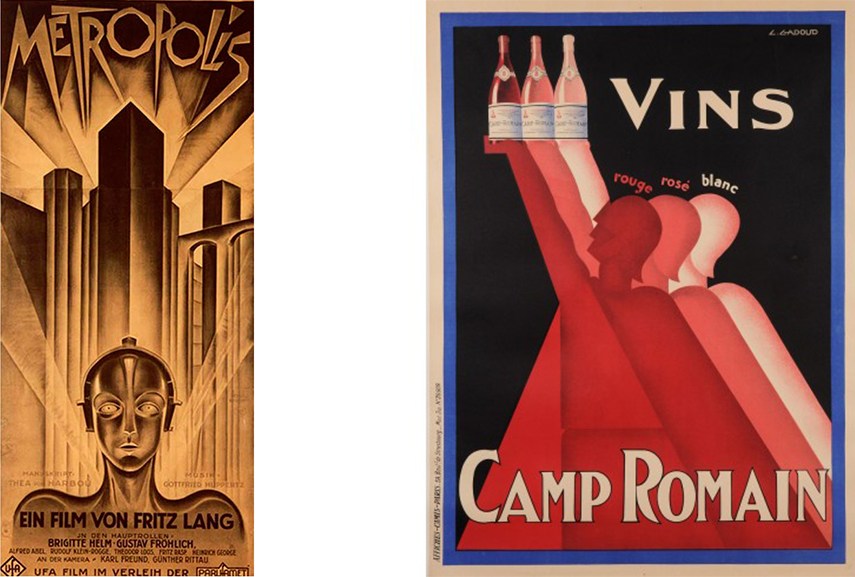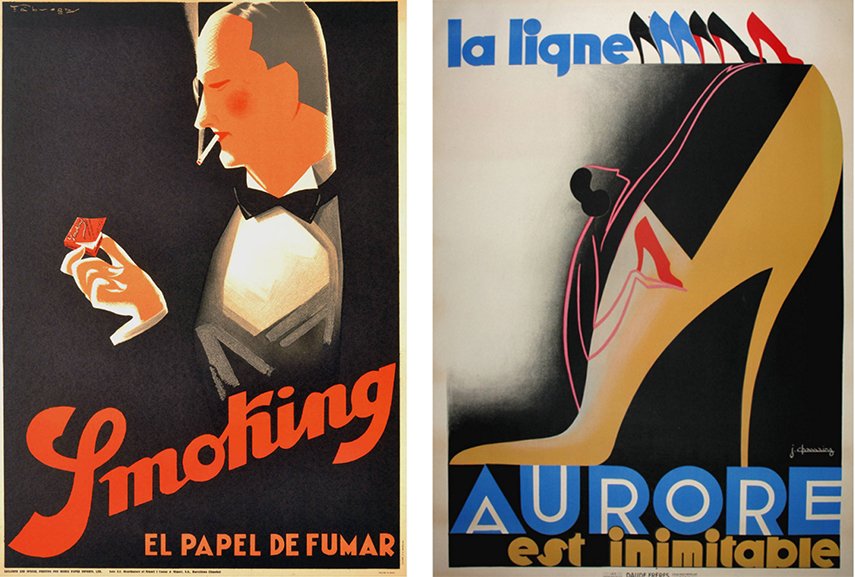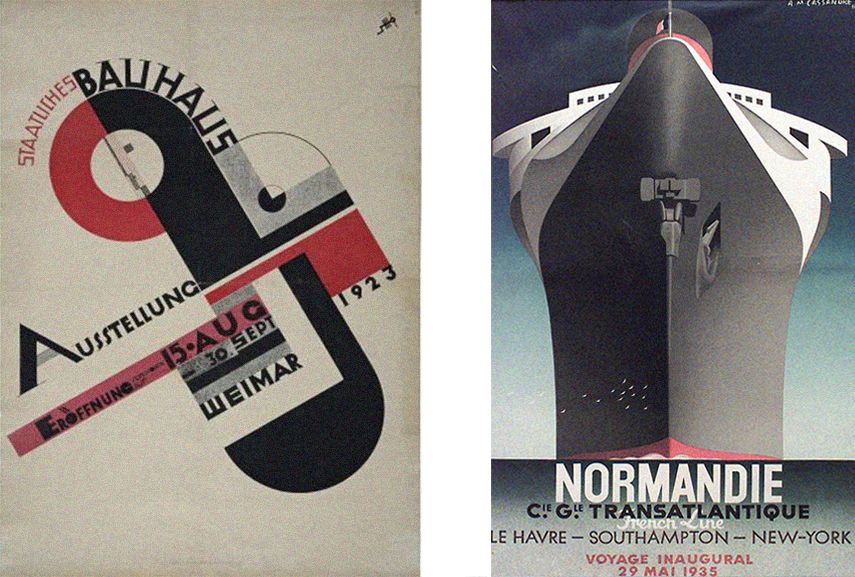The Irresistible Nature of an Art Deco Poster
Just like a number of other significant art movements, Art Deco emerged in the period between two world wars, along with the great changes in society. Although it was primarily based on furniture design at the time of its inauguration, its legacy includes a range of Art Deco poster designs which informed the future aesthetics of decorative arts, going beyond and stretching the boundaries of high art, while covertly opposing the restrictive nature of Modernism. The language of Art Deco stemmed from the so-called avant-garde groups, such as late fauvism, cubism and purist abstraction, but it was arguably different from Modernism in a narrower sense of the word, simply because it rendered the geometric form as a decorative tool, and not as a form of reduction to the essentials. In that sense, Art Deco paid attention to décor in a way similar to that of its Art Nouveau antecedents, but the difference between the two was a one-on-one evidence of change in human perception. While the Art Nouveau movement strove to derive the aesthetic principles from nature and to imitate the curvy, organic form, Art Deco represented the newly established faith in technology, and it was, therefore, the one to translate the irrational form of decoration into the mathematical one.

Commercial Aspects of Art Deco Aesthetics
The "Art Deco" label probably stems from a furniture art fair held in Paris in 1925, which contained the term “Arts Decoratifs” in its title. Ironically, it was coined by the icon of Modernism himself, the famous architect Le Corbusier. Although the protagonists of the style did not use the term as we use it today, it was clear that this emerging style stream was a total style. Its principles were applicable everywhere – from small designed objects, to entire buildings. Naturally, the aesthetics were used in graphic design as well, and this graphic language became one of the trademarks of the movement afterwards. The industrial appeal had influenced the appearance of an Art Deco posters, reflecting on the new ideas in typography and the geometric treatment of a surface. It's style aimed to transfigure the essence of the physical world through simplification, making the visuals more abstract but keeping them within the domain of the figurative, which made them comprehensible and universally acceptable (rather than avant-garde, wrongly labelled as "degenerate" in the World War II period, as it happened with the most radical forms of the 20th century art).

Art Deco Posters - Progressive, yet Unchallenging
This headline is borrowed from a short text published on Upper Iowa University's website, as the words progressive and unchallenging combine into a precise description of the Art Deco aesthetics. There is no doubt that the style has introduced the world to a new visual context - however, while standing on the edge of certainty, it never bothered to cross that line. The Art Deco poster was visually pleasing and likable, as much as it seemed to embody an upper-class image of standards and trends. Therefore, is not a coincidence that the movement's typography and the recognizable "fragmented" illustration were often used for the purposes of advertising, and that these designers were commissioned to make posters for classy fashion brands and their consumerist products. Perfumes, cigars, shoes, films, drinks and food, all of them rendered through the eyes of Art Deco geometry, served to the global audience in its most suggestive form. The tricks pulled by the capitalist society were used a hundred years ago as well, with similar methods, counting on the modern man's desire to consume and to possess. Thanks to the inviting aesthetics, the modern man was also able to do this in style.

Inherently Seductive
However, the modern consumer was often a she rather than a he, which could open a whole new chapter addressing the gender issue in the inter-war era, referring to the fact that the decorative arts were often associated with women, as opposed to the male-dominated high arts. Women were inevitably cast as the patrons of deception and seduction (and this stereotype remains even to this day), which was one of the reasons why decor was considered to be a slightly "girly" category in the 20th century (since decoration was seen as a form of dishonesty). That said, one of the most progressive aspects of Art Deco was the fact that it managed to turn things around, and to use this new language of the machine age in order to define a different kind of decorative imagery, one that was not explicitly ornamental. In that sense, the Art Deco protagonists were masters of disguise: their style was perhaps even more commercial than that of Art Nouveau. Aesthetically, Art Nouveau was imprisoned by tradition, but it was closer to the modern thought in essence, whereas the Art Deco prints were responsive to the pro-industrial generation, but its intent was, merely - to decorate.

The 20th Century Poster
To understand why the Art Deco posters are so irresistible by nature, you could take a look at other forms of design from the earlier 20th century and compare them. As you can see in the example above, the Bauhaus style, which coincided with Art Deco and was quite supportive of technology as well, had a far more rigorous approach to graphic design and prints. While the Bauhaus was founded on the "form-follows-function" principle, Art Deco was visually more arresting and less concerned with functionalism, bathed in bright colors and representing the commercial subject matter. However, it did present the geometrical form as a new means of communication, which gave an impression of trendiness and modernity. This intelligent approach to design has made the Art Deco posters incredibly popular and influential. This impact is made manifest through the fact that it is becoming hard to find an original poster from the Art Deco period online, since there are so many contemporary versions of it today. The age of the "new" machines and digital technologies offers easy ways to imitate the geometrical form and to replicate the vintage posters, which is one of the reasons why this style is becoming increasingly popular once again. That, and the fact that style speaking to the mass culture in a simplified version of the language of art is always a safe bet.
Editors’ Tip: The Art Deco Poster
The author of this eclectic collection of posters is William Crouse, a long-time poster aficionado. Mostly focusing on the Art Deco poster, Crouse has selected over 300 examples of high quality poster prints, made in the period between two wars. The posters are organized into categories, according to their subject matter, including fashion, aviation, communication, etc. The book includes some of the rarest examples of the style there are, among them the unique prints by the super-stars of the movement, such as Cassandre, Nizzoli and Beall. Each print is accompanied by an expanded caption that addresses the aesthetic, sociological, economic and political context of the image.
Featured image: A. M. Cassandre - Dubonnet. All images used for illustrative purposes only.
Can We Help?
Have a question or a technical issue? Want to learn more about our services to art dealers? Let us know and you'll hear from us within the next 24 hours.

